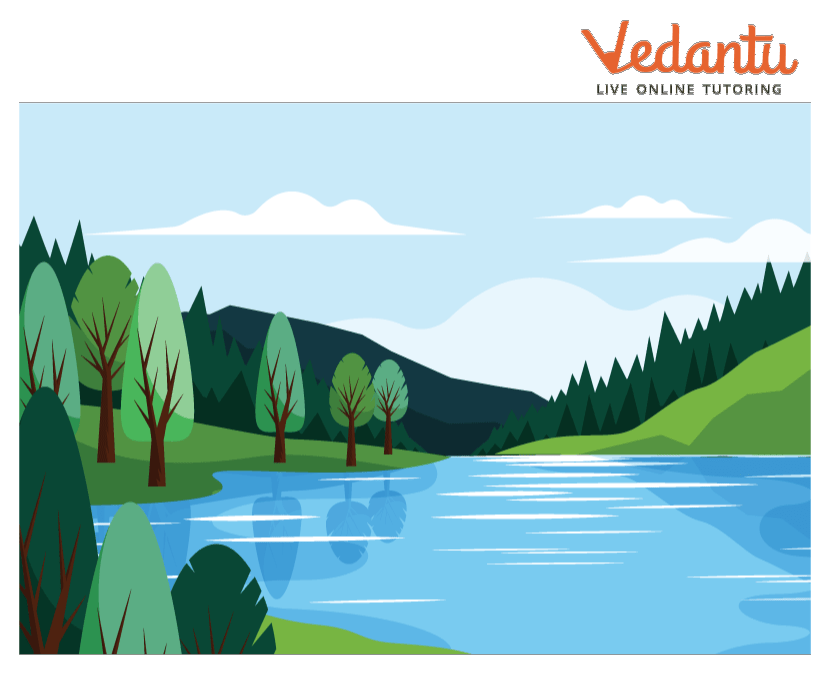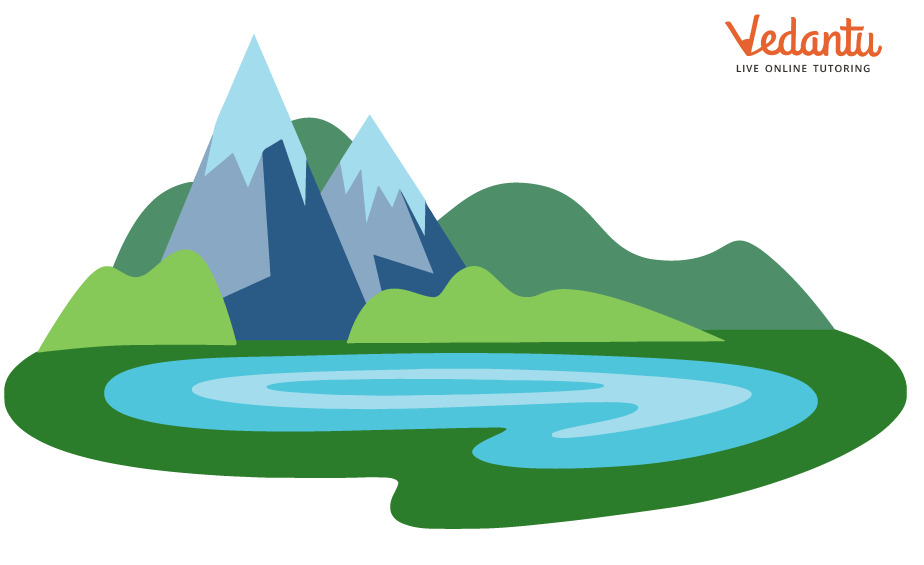




What Makes Lakes Unique? Key Features & Importance for Students
A lake is a large body of water surrounded by land. Lakes account for less than one per cent of the world's freshwater supply, yet they are a highly significant resource source. Almost all of the world's freshwater is frozen in massive amounts of ice or buried beneath. It is home to more than 98 percent of the world's freshwater resources. Let's learn more about lakes and some important facts about lakes in this article.

Overview of Lakes
What is a Lake?
A lake is a large, still body of water surrounded by land. Lakes can be big or small, forming in basins, craters, or holes in the ground that look like bowls. Most of the time, rivers or streams drain water from the lake when it gets too full. Some lakes are called "closed lakes" because water only leaves them through evaporation. Most lakes have fresh water, but some have salt water. Most closed lakes have saltwater because when water evaporates, it leaves behind salt. Lakes can be found on seven continents.
How do Lakes Form?
There are many ways for a lake to form, but all involve water getting into a basin. Some lakes were made when glaciers scraped the ground as they moved, making huge basins. The basins were filled with water when the glaciers melted, creating lakes. Other lakes are made when the tectonic plates of the Earth move. When plates move, they sometimes break the Earth's crust, making big cracks that fill with water to make basins. Over time, rain or water from streams that flow into the basins fills up the basins. Volcanoes can even make lakes. When a volcano stops erupting, it stops being active.
When this happens, the crater at the top of the volcano can fill with water from melted snow or rain. Then there's a lake! When the top of a volcano is blown off or falls off during an eruption, this can also cause lakes to form. This makes a caldera hole, which can also fill with water and turn into a lake. When rocks, dirt, or mud pile up in a river or stream because of a landslide or mudslide, the water can't flow. This makes a lake.
Interesting Facts About Great Lakes

Lake
Some interesting facts about Great Lakes are as follows:
Lakes contain 90% of Earth's water, excluding oceans.
The Caspian Sea, which is in both Europe and Asia, is the largest lake in the world.
The Great Salt Lake in Utah is the largest saltwater lake in the United States, even saltier than the sea.
Over time, the basins of all lakes slowly fill up with plant matter, dirt, sand, and small pieces of rock.
Fossils can be found in great places like dry lake beds.
Many rare and unique plant and animal species live in lakes.
People drink water from lakes, get electricity from them, and use them for fun things like swimming, boating, and fishing.
Important Facts About Lakes in India
Some of the important facts about lakes in India are listed below:
In 1981, Chilika Lake became the first Indian wetland of international importance.
The Tibetan Autonomous Region is home to 60% of the lake.
India's biggest freshwater lake is Loktak Lake.
Chilika Lake in the state of Orissa is India's biggest saltwater lake.
Udaipur is known as India's "City of Lakes."
Conclusion
A lake sometimes called a "loch" is a waterbody surrounded by land and doesn't have a river or other waterway that feeds or drains it. Lakes are land-based bodies of water that are not oceanic. Every lake has a place where it may collect drainage, known as the lower-lying lake. This region is the destination for rivers and melting glaciers.
FAQs on Fascinating Facts About Lakes
1. What are reservoirs?
People make some lakes by digging basins or damming rivers or streams. Reservoirs are the name for these artificial lakes. The water in reservoirs is often used to produce hydroelectric power, which can power homes and businesses.
2. What are saltwater lakes?
Not all lakes have clean water in them. The Dead Sea is the saltiest natural lake in the world. It is in Israel and Jordan. The Great Salt Lake in the U.S. State of Utah is another body of salt water. It is all that is left of what used to be a much bigger lake of freshwater. As the weather got drier, the water in the lake began to evaporate. The rivers that flowed into the lake brought salt with them. The salt was left behind when the water dried up.
3. What are examples of lakes?
A lake is a body of water surrounded by land. It can be natural or man-made. Lake Erie and Lake Ontario are both examples of a lake. Freshwater lakes are very useful in many ways. The water that cities and towns drink comes from them. Farmers use irrigation systems to get water from lakes to their crops in places that don't get much rain. Hydroelectric plants use water for electricity. Lakes are fun places to go swimming and boating.









